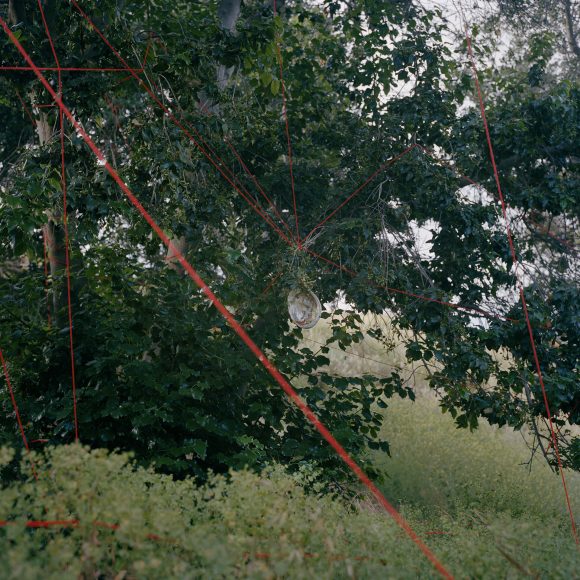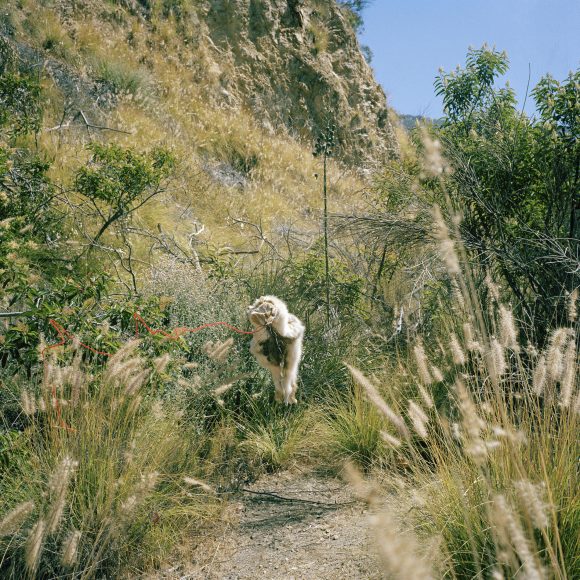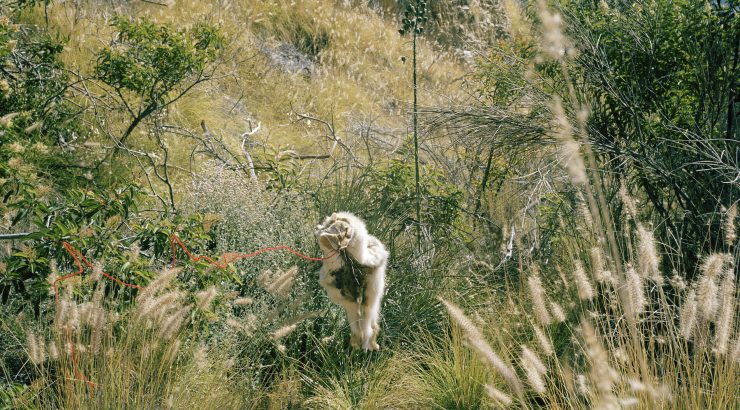Mercedes Dorame Newly Imagining the Past, Present, and Future of Indigenous Visibility
June 27, 2022
As an artist born in Los Angeles, and as a member of the Gabrielino Tongva Indians of California (whose land extended from the Los Angeles Basin to the Southern Channel Islands), Mercedes Dorame feels deeply connected to the landscape of California. She explores the problematics of living in a place that once belonged to her ancestors, a place they lost access to. The absence of federal recognition continues to deny the Tongva reservation land and gathering place. Dorame tells this story of forced erasures of Tongva cultural heritage from Tonvaangar landscapes through her work. By integrating her Tongva ancestry into her art, Dorame is dedicated to engaging ideas of cultural construction and Indigenous (in)visibility.
Mercedes Dorame describes her work as a “product of weaving back together the loose ends that have been passed down to [her], filling in the cracks with mud, yarn, concrete and cinnamon and making a new whole.”

Mercedes Dorame, Our House Made of Spiderwebs – ‘Eyookin Wereechey, archival pigment print, 2018. Purchased with funds from the Ellingson Family
Dorame’s exploration of her Indigenous heritage began in response to the powerlessness she felt working on burial sites, experiencing her ancestors being moved to make way for development. Since then, she has been inspired to assert the presence of the Tongva people by intervening in the landscapes of California located on ancestral Tongva land. Dorame looks at her interventions as collaborations with these everchanging landscapes. She strives to reclaim and recontextualize Indigenous land by intervening with pieces from her collection of cultural objects. Some of these objects are things that have been passed down to her, while others, such as the shell in Our House Made of Spiderwebs (2018), are items she has collected from culturally and personally important sites. She intentionally uses the words “cultural belongings” over “artifacts” to describe the materials of heritage in her work. She explains that “when you say artifacts, you think of things of the past, but cultural belongings have connections to the living, breathing community that still exists in a place.”
Many of Dorame’s work involves the recurring motif of the portal, which first emerged in her collaborations with spiders. The motif relates to Tongva cosmology depicting layers of worlds, where the ceremonial space empowers transitional moments and movement between layers. Another recurring element recognized in Dorame’s work is the lengths of red string that represents the idea of positionality: paying attention to moments and understanding their bigger scope. The red string inspires viewers to not only look up but also follow the line back into the land to acknowledge the significance of where they are.

Mercedes Dorame, Coyote Dance with Me – Iitar NečoovaYakeenax, archival pigment print, 2018. Purchased with funds from the Ellingson Family.
Dorame finds strength in using visual art to represent a history predominantly rendered through oral tradition. Without words to explain every detail, she leaves the viewer space to think, learn, and breathe with the work. When describing her work as “ceremonial interventions,” Dorame does not explicitly tell the viewer what the ceremony is; however, she does tell the viewer that the objects and materials she works with have an importance which meaning can be built upon. Mercedes Dorame aims to inspire and spark curiosity in everyone who comes in contact with her art. She challenges the stereotypes of Native Americans set by the entertainment industry by creating non-stereotypical visual representations, enlightening the viewer about the diversity and magnitude of Native culture. Other members of the Tongva tribe have responded positively to her work and its power in amplifying Tongva visibility. As Mercedes Dorame’s work looks backward to reflect on her Tongva ancestry, her work also looks forward, establishing the Tongva people’s continuum of presence.
Sources:
https://www.mercedesdorame.com/
https://interlocutorinterviews.com/new-blog/2019/7/17/interview-mercedes-dorame
https://www.arts.ucla.edu/single/mercedes-dorame-making-art-on-tongva-land/
We invite you to explore all the works in the Escalette Collection by visiting our eMuseum.
Wilkinson College of Arts, Humanities, and Social Sciences is the proud home of the Phyllis and Ross Escalette Permanent Art Collection. The Escalette Collection exists to inspire critical thinking, foster interdisciplinary discovery, and strengthen bonds with the community. Beyond its role in curating art in public spaces, the Escalette is a learning laboratory that offers diverse opportunities for student and engagement and research, and involvement with the wider community. The collection is free and open to the public to view.


